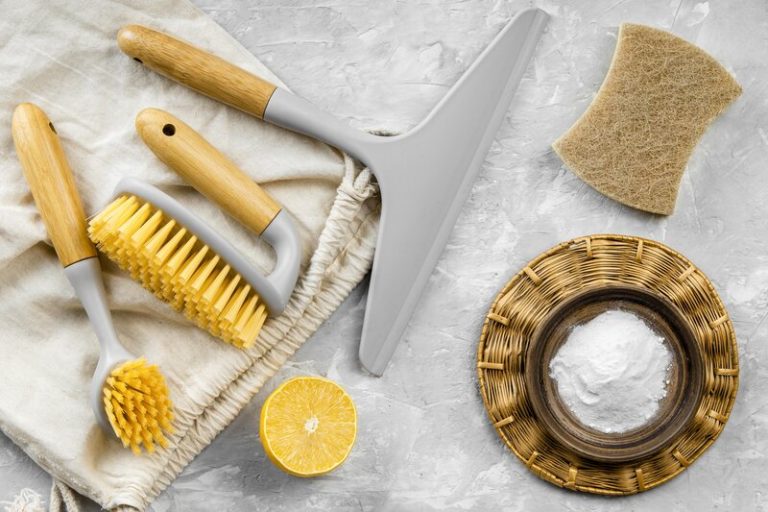In the retail world, a well-structured supermarket cleaning checklist is vital for attracting and retaining customers. Supermarkets are high-traffic environments where cleanliness directly impacts food safety and overall shopping experiences. Rigorous cleaning routines are necessary to prevent contamination and ensure that every corner of the store is spotless and inviting.
This article delves into the essential components of a supermarket cleaning checklist, outlining daily, weekly, and monthly tasks that are crucial for maintaining hygiene standards. By breaking down these responsibilities, we’ll highlight the significance of using appropriate cleaning techniques and materials to comply with health and safety regulations.
Join us as we explore how to create a cleaner, safer shopping environment that keeps customers coming back for more!
The Importance of Supermarket Cleaning
Supermarkets are visited by hundreds, if not thousands, of customers daily. This constant flow of people increases the likelihood of dirt accumulation, bacteria spread, and potential food contamination. Moreover, poorly maintained supermarkets can result in food safety violations, damaged reputation, and even financial penalties. A well-organised supermarket cleaning checklist helps keep all areas of the store clean, ensuring food hygiene and customer satisfaction.
Health and Safety Regulations
In the UK, food safety regulations are outlined by the Food Standards Agency (FSA). Supermarkets must adhere to strict guidelines regarding cleanliness and food handling to avoid the spread of harmful bacteria like E. coli and Salmonella. Regular cleaning of areas where food is stored, prepared, and displayed is critical to preventing contamination. Compliance with health and safety standards ensures the supermarket remains operational and protects both staff and customers from potential harm.
Components of a Supermarket Cleaning Checklist
A well-organised supermarket cleaning checklist must cover all areas within the store, from customer-facing sections to back-of-house areas where goods are prepared and stored. Below is an outline of daily, weekly, and monthly cleaning tasks to maintain a spotless supermarket.
a. Daily Cleaning Tasks
Daily cleaning tasks are essential for maintaining the cleanliness and hygiene of areas that experience the most traffic and interaction. These tasks focus on areas where food is sold, customer interactions take place, and high-touch surfaces are located.
1. Entrance and Customer Areas
The entrance and customer areas, such as the foyer, aisles, and checkout counters, are high-traffic zones. These areas require constant cleaning to make a good impression on customers and reduce the risk of dirt and bacteria spread.
- Mop and sweep floors: Supermarket floors are prone to collecting dirt, debris, and spillages throughout the day. Sweep floors regularly and mop them with appropriate cleaning solutions at least once or twice during operating hours, and again after closing.
- Clean and disinfect shopping trolleys and baskets: With hundreds of customers using trolleys and baskets daily, these should be wiped down and disinfected multiple times a day.
- Wipe down checkout counters: Cash registers and card payment machines are high-touch areas that must be wiped down and sanitised frequently to avoid the spread of bacteria.
- Clean glass doors and windows: Any glass surfaces should be cleaned and polished to remove fingerprints, smudges, and dust accumulation.
- Restock and clean hand sanitiser stations: Customers expect easy access to hand sanitiser, especially near entrances and checkout areas. Clean and refill dispensers as needed.
2. Aisles and Shelving Units
Aisles and shelving units in supermarkets are regularly touched and prone to accumulating dust, food particles, and spilled items. Daily maintenance ensures that these areas stay clean and hygienic.
- Dust and wipe down shelves: Use a damp cloth to wipe dust off all shelves and restocking areas. This is especially important in aisles with dry goods, where dust can quickly accumulate.
- Sweep and mop aisle floors: Regularly sweep up any dirt, spilt items, or packaging debris, and mop the floors with a sanitising solution.
- Remove expired or damaged goods: As part of the daily cleaning routine, check for any expired or damaged goods and remove them from the shelves to maintain food safety standards.
- Clean signage and promotional displays: Wipe down any display stands, promotional signs, or posters to ensure they are dust-free and visually appealing.
3. Fresh Food Sections
The fresh food sections, including the produce, delicatessen, bakery, meat, and fish counters, require thorough daily cleaning. These areas handle raw and perishable food, so hygiene is paramount to prevent foodborne illnesses.
- Disinfect countertops and display cases: All surfaces that come into contact with food must be cleaned with food-safe disinfectants multiple times a day. This includes preparation areas, display cases, and weighing scales.
- Clean chopping boards, knives, and utensils: All tools used in food preparation should be cleaned and sanitised immediately after use.
- Remove and discard expired fresh produce: At the end of each day, remove any fresh produce, meat, or bakery items that are approaching their expiration date.
- Sanitise refrigerated display units: Wipe down the interior and exterior of refrigeration units, making sure to clean the handles and seals.
- Sweep and mop floors: Pay extra attention to floors in fresh food sections as spillages are common. Clean them immediately to avoid slips and contamination.
4. Customer Restrooms
Clean and well-stocked restrooms are essential for customer satisfaction and hygiene standards.
- Clean and disinfect toilets, sinks, and floors: Use strong disinfectants to clean toilets, urinals, sinks, and floors to ensure that germs and bacteria are eliminated.
- Refill soap, toilet paper, and hand towels: Restock all supplies, ensuring that soap dispensers and hand dryers are functioning correctly.
- Clean mirrors and fixtures: Wipe down all reflective surfaces, countertops, and door handles.
5. Employee Areas and Stockrooms
Back-of-house areas, including staff break rooms, kitchens, and stockrooms, should be cleaned daily to maintain hygiene for employees and prevent cross-contamination.
- Clean and sanitise kitchen areas: If food is prepared in employee areas, all surfaces must be sanitised regularly. This includes countertops, sinks, and microwaves.
- Sweep and mop stockroom floors: Stockrooms are prone to dirt and debris from packaging. Sweep and mop daily to maintain a clean workspace.
- Empty bins and clean waste disposal areas: Remove rubbish and recycling from all areas to prevent bad odours and pest infestations.
b. Weekly Cleaning Tasks
Weekly cleaning tasks involve deep cleaning areas that don’t require daily attention but are still important for maintaining overall cleanliness. These tasks may take longer to complete but help to ensure no part of the supermarket is neglected.
1. Deep Clean Floors
- Scrub floors: Use a floor scrubbing machine to give the supermarket floors a deep clean, especially in areas that experience heavy traffic or frequent spillages, such as the fresh food section or entrance.
- Polish floors: Depending on the type of flooring, polishing may be necessary to maintain a professional appearance and prevent wear and tear.
2. Clean and Sanitise Refrigeration Units
Refrigeration units should be deep cleaned weekly to ensure they are functioning efficiently and free from bacteria.
- Defrost freezers: If your supermarket has walk-in freezers or display freezers, ensure they are defrosted and cleaned inside and out.
- Wipe down all surfaces: Clean the shelves and glass doors of refrigeration units, using a food-safe disinfectant.
3. Clean Store Fixtures
- Dust and wipe downlights and fixtures: Overhead lights and any hanging fixtures should be cleaned to remove dust and cobwebs.
- Clean ventilation ducts: Check and clean air vents to remove dust buildup, ensuring that air quality in the store is maintained.
4. Deep Clean Restrooms
- Sanitise walls and partitions: Restroom walls and partitions should be wiped down and disinfected to prevent the spread of germs.
- Clean tiles and grout: Scrub the tiles and grout in restrooms to remove any dirt or mildew.
5. Clean Stockroom Shelving
- Wipe down shelves: Use a damp cloth to clean the shelving in stockrooms, ensuring that food products are stored in a clean environment.
c. Monthly Cleaning Tasks
Monthly tasks involve deep cleaning and maintenance of areas that may not be frequently used or that require special attention. These tasks often require specialised equipment or professional services.
1. Clean High Areas
- Dust and wipe down high surfaces: Clean ceiling corners, light fixtures, and ventilation ducts to remove dust that has accumulated over the month.
- Inspect and clean the roof and gutters: Ensure that the roof and gutters are free from debris to prevent leaks and damage to the building.
2. Deep Clean Refrigeration Units
- Service refrigeration equipment: Hire a professional to service refrigerators, freezers, and cooling units to ensure they are operating at the correct temperature and functioning efficiently.
- Deep clean condenser coils: Condenser coils on refrigeration units should be cleaned to prevent the build-up of dust, which can reduce efficiency and lead to costly repairs.
3. Pest Control
- Inspect for pests: Carry out a thorough inspection of the entire supermarket for any signs of pest infestations, such as rodents or insects.
- Arrange professional pest control: Bring in pest control specialists to inspect the building and apply preventative treatments where necessary.
4. Cleaning Equipment Maintenance
- Inspect and maintain cleaning equipment: Clean and maintain floor scrubbers, vacuum cleaners, and other equipment used in daily and weekly tasks.
- Replace worn-out supplies: Ensure that all mops, buckets, and cleaning cloths are replaced regularly to maintain high cleaning standards.
The Role of Staff Training and Accountability
For a supermarket cleaning checklist to be effective, all staff must be properly trained in the use of cleaning products, equipment, and techniques. Clear roles should be assigned to ensure accountability, with a supervisor checking off completed tasks on the checklist.
A supermarket cleaning checklist is essential for maintaining a safe, hygienic, and inviting environment. By following daily, weekly, and monthly cleaning tasks, supermarket staff can ensure that the store remains in top condition, meeting health and safety regulations while providing a pleasant shopping experience for customers.
Cleaning is not just about appearance but also about safeguarding the health of customers and employees, protecting products, and ensuring compliance with industry standards. With a well-structured cleaning checklist and properly trained staff, supermarkets can maintain the highest hygiene standards and operate smoothly, creating a clean and safe shopping environment for all.
To elevate your supermarket’s cleanliness and hygiene, consider enlisting the professional services of TEKA Cleaning. Our expert team is dedicated to providing an unparalleled deep cleaning service tailored specifically for high-traffic retail environments like supermarkets. We understand the importance of maintaining a pristine space, and our rigorous cleaning protocols will ensure that every inch of your store meets the highest health and safety standards.
By choosing TEKA Cleaning, you free up your staff to focus on providing excellent customer service while we take care of the heavy lifting. Don’t leave cleanliness to chance—contact us at 01223 751 544 today. With our reliable commercial cleaning solutions, you’ll create a welcoming shopping experience that not only protects your customers and staff but also enhances your supermarket’s reputation. Trust TEKA Cleaning for a spotless store and peace of mind, knowing that your supermarket is in expert hands!
Read also:











